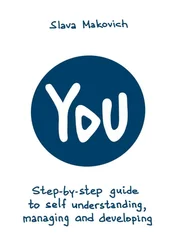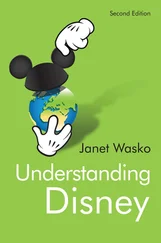In fact, I think that people often use their romantic inclinations to guide their self-identifications about their sexual orientation. So even if they do not have sexual attractions to one sex or another, their romantic inclinations toward one sex or another determine whether they self-identify as homosexual, heterosexual, or bisexual. I think this is often the case for asexual people, particularly if they are not “out.” Young and/or closeted asexual people may still self-identify as, say, heterosexual when asked on an anonymous questionnaire about their sexual orientation, even though in a vague sense they may not feel that this label fully captures who they are as people. Again, in some sense, such people may understand “sexual orientation” more broadly to include their love/gender orientation. If so, the true number of asexuals (i.e., those lacking in sexual attraction) may be underestimated (Bogaert, in press-a; Chasin, 2011). From my perspective, these “romantic” asexual people don’t have a (traditional) sexual orientation, although they do have a romantic orientation. Interestingly, many contributors to AVEN, who are privy to and often discuss the latest scientific work on sexuality, have recently picked up on the romantic/sexual distinction, and have begun to self-identify in the complex way that this distinction engenders. So, for example, it is not unusual for an asexual person to say that he is asexual but bi romantic, or that she is asexual but hetero romantic.
Let’s move on to the other A: arousal . This usually refers to the physical aspects of one’s sexual response, or what happens in the genitals when sexual stimuli are encountered (e.g., stroking of the inner thigh, or imagining a sexy scene). So this aspect is less psychological, at least in comparison to attraction, and more physical, referring primarily to bodily responses such as erections and vaginal changes (lubrication). Because these physical changes are detectable, there has been a tradition in sexology of researchers measuring psychophysical sexual arousal. The man who pioneered the technique in the 1950s was Kurt Freund (sounds like Freud but isn’t), a Czech/Canadian who was primarily interested in seeing if men were gay or straight. Later he used this technique to measure deviant arousal in male sexual offenders. The original device used to measure physical arousal was a specialized elastic tube placed around the flaccid penis, which measured changes in blood flow as a man gained an erection. Still later, in the 1960s, a psychophysical device—a tampon-like cylinder inserted in the vagina, also measuring genital blood flow—was developed for women. Today, these techniques, or modern variations of them, are relatively widely used (at least among sexologists!) to assess sexual arousal in men and women in a variety of circumstances.
There is also a subjective or purely psychological component to arousal. Most people have a sense of their own arousal (“feeling” aroused), and this can be simply measured by asking someone, for example, “How aroused or turned on are you by what you are watching?” People will typically use their own genital changes as a marker, but there is not necessarily a perfect correspondence between physical changes and psychological arousal. This is particularly true for women, for whom subjective arousal often does not match bodily changes that may or may not be occurring (Heiman, 1977). Thus, there can be an arousal disconnect between what happens in our bodies and what happens in our minds.
How are arousal and attraction related? Typically, our level of arousal, both physical and subjective, reflects our sexual attractions. So, if Joe is sexually attracted to women, then his physical arousal patterns (i.e., erections) will likely correspond to that fact. That is, he is going to be aroused in the presence of women, especially if they are attractive, unclothed, and/or engaging in sex with him. Indeed, because of this reasonable linkage between our arousal and attractions, psychophysical measures have often been used for detecting a person’s deep-seated attractions, including whether the person is gay or straight. But, given that there is a potential decoupling between physical and subjective arousal (particularly in women), there is also a potential disconnect between one’s physical arousal and one’s attractions. So, this physical arousal cannot necessarily be seen as a mirror reflecting one’s basic attractions, especially in women. Even in men, there can a decoupling between attraction and arousal. Men can have spontaneous erections without having a corresponding attraction to an object of desire. For example, a man may wake up with a morning erection without necessarily having an object of desire prompting its appearance. So, one can have a mere physical arousal experience not necessarily attached to an attraction object, or for that matter to even subjective arousal.
Again, you may be thinking, What does all this have to do with asexuality? Well, plenty. First, if a common definition of asexuality is experiencing a lack of sexual attraction, being asexual doesn’t necessarily mean that one is incapable of being sexually aroused. In fact, for many asexual people, physical arousal is not an issue. As one asexual person describes, “I did, you know, test the equipment… and everything works fine, pleasurable and all, it’s just not actually attracted to anything” (Brotto, Knudson, Inskip, Rhodes, & Erskine, 2010, p. 612). Note that this quote also suggests that there may be subjective arousal as well: knowing that one’s body is aroused and even liking this feeling (pleasure). In short, a lack of sexual attraction does not automatically mean a lack of physical or subjective arousal.
Having finished with the two A words of sex, let’s move on to B: behavior . Behavior is what we do—that is, our actions. There are a variety of overtly sexual activities, both solitary and partnered: masturbation, fondling, oral sex, intercourse, and so forth. However, it is not just the acts themselves but also with whom we do them that comprises our sexual behavior. Thus, a sex researcher interested in behavior may ask participants about their frequency of oral sex and also with whom they do this activity (e.g., men, women, or both). Indeed, there has been a tradition in the social sciences to use behavior as the main focus of study or interest, or as the key dependent variable . People’s thoughts and feelings were not of primary interest, in large part because it was felt that these aspects of the mind, although obviously important, were not amenable to clear measurement. Alfred Kinsey, the twentieth century’s well-known pioneer of human sexuality, was of this tradition and was most comfortable with assessing and discussing (sexual) behavior. It is not surprising that his famous books have the word behavior in the titles: Sexual Behavior in the Human Male and Sexual Behavior in the Human Female (Kinsey, Pomeroy, & Martin, 1948; Kinsey, Pomeroy, Martin, & Gebhard, 1953).
Kinsey described people’s sexual orientation on a point scale from zero to six, again mostly based on their behavior (what they did and with whom). Kinsey sixes are exclusively gay/lesbian, while Kinsey zeroes are designated as exclusively heterosexual. Those in the middle (e.g., two to four) were designated as bisexual. This scale assumes that all people have a high level of sexual interest in their preferred sexual partners. Thus, it does not accommodate asexuality. However, Kinsey did have a name for those who just didn’t fit on this scale: X s. So, at a party (okay, a rather unusual party), someone asks, “Are you a Kinsey zero (exclusively straight)? Perhaps a Kinsey three (bisexual)? Or perhaps a Kinsey six (exclusively gay)?” An asexual person schooled in the Kinsey scheme may reply, “Well, actually, I am a Kinsey X .”
Читать дальше












